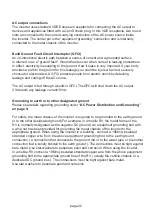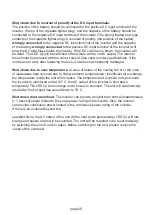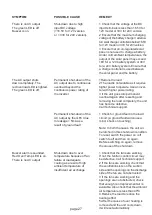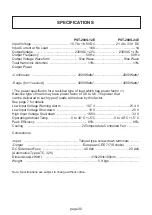
Sizing the Inverter Battery Bank.
One of the most frequently asked question is, “how long will the batteries last? This question
cannot be answered without knowing the size of the battery system and the load on the
inverter. Usually this question is turned around to ask ”How long do you want your load to run?”,
and then specific calculation can be done to determinate the proper battery bank size.
There are a few basic formulae and estimation rules that are used:
Formulae 1 Power in Watts(W) = Voltage in Volts (V) x Current in Amperes (A)
Formulae 2 For an inverter running from a 12 V battery system, the DC current required
from the 12 V batteries is the AC power delivered by the inverter to the load
in Watts (W) divided by 10
Formulae3 Energy required from the battery = DC current to be delivered
(A) x time in Hours (H).
The first step to estimate the total AC watts (W) of load(s) and for how long the load(s)
will operate in hours (H). The AC watts are normally indicated, formula 1 given above
may be used to calculate the AC watts by multiplying 120 VAC by the AC current in
Amperes. The next step is to deliver the DC current in Amperes (A) from the AC watts
as per formulae 2 above. An example of this calculation for 12 V inverter is given below:
Let us say that the total AC Watts delivered by the inverter = 1000W. Then, using formulae
2 above, the DC current to be delivered by the 12 V batteries = 1000W ÷ 10 = 100 Amperes.
Next, the energy required by the load in Ampere Hours (AH) is determined. For example,
if the load is to operate for 3 hours then as per Formulae above: Energy to be delivered
by the 12 V batteries = 100 Amperes x 3 Hours = 300 Ampere Hours (AH).
Now, the capacity of the batteries is determined based on the run time and the usable capacity.
From Table 1 above, the usable capacity at 3 Hour discharge rate is 60%.Hence the actual
capacity of the 12 V batteries to deliver 300 AH will be equal to 300 AH ÷ 0.6 = 500 AH.
And finally, the actual desired rated capacity of the batteries is determined based on the fact
that normally only 80% of the capacity will be available with respect to the rated capacity
due to non availability of ideal and optimum operating and charging conditions. So the final
requirements will be equal to: 500 AH ÷ 0.8 = 625 AH (note that the actual energy required
by the load was 300 AH).
It will be seen from the above that the final rated capacity of the batteries is almost 2 times
the energy required by the load in AH
Thus, as a thumb rule, the AH capacity of the batteries should be twice the energy
required by the load in AH.
For the above example, the 12 V batteries may be selected as follows:
- Use 6 Group 27 / 31, 12 V, 105 AH batteries in parallel to make up 630 AH, or
- Use 3 Group 8D, 12 V, 225 AH batteries in parallel to make up 675 AH.
page 16
Содержание PST-100S-12E
Страница 33: ...www samlex com www samlex solar com...
















































